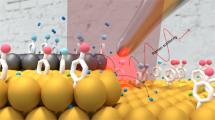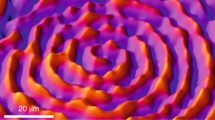Abstract
IT is evident that the apparent area of an irregular surface will depend on the size of the object used for measuring it. This has been clearly expressed by Constable (NATURE, Sept. 15, p. 399), the ‘maximum’ area of a surface being defined as that of “the envelope of the monatomic film of hydrogen atoms closely packed, all in contact with each other and with the catalyst, and completely covering it”. This, as an arbitrary definition of area, is a useful one, though it is questionable whether it has any real physical significance, the work of Davisson and Germer on the diffraction of electrons indicating that the packing of gas atoms adsorbed on a metal surface follows that of the metal atoms in the crystal lattice.
This is a preview of subscription content, access via your institution
Access options
Subscribe to this journal
Receive 51 print issues and online access
$199.00 per year
only $3.90 per issue
Buy this article
- Purchase on Springer Link
- Instant access to full article PDF
Prices may be subject to local taxes which are calculated during checkout
Similar content being viewed by others
Author information
Authors and Affiliations
Rights and permissions
About this article
Cite this article
BOWDEN, F. Definition of ‘Area’ in Contact Catalysis. Nature 122, 647–648 (1928). https://doi.org/10.1038/122647a0
Issue Date:
DOI: https://doi.org/10.1038/122647a0
This article is cited by
-
Whither Goest Thou, Catalysis
Catalysis Letters (2016)
Comments
By submitting a comment you agree to abide by our Terms and Community Guidelines. If you find something abusive or that does not comply with our terms or guidelines please flag it as inappropriate.



